
Prosopis is a genus of flowering plants in the pea family, Fabaceae. It contains around 45 species of spiny trees and shrubs found in subtropical and tropical regions of the Americas, Africa, Western Asia, and South Asia. They often thrive in arid soil and are resistant to drought, on occasion developing extremely deep root systems. Their wood is usually hard, dense and durable. Their fruits are pods and may contain large amounts of sugar. The generic name means "burdock" in late Latin and originated in the Greek language.
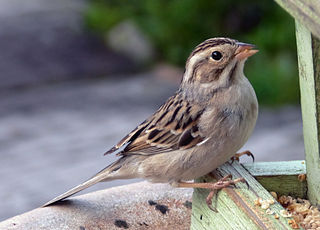
The clay-colored sparrow or clay-coloured sparrow is a small sparrow of North America.
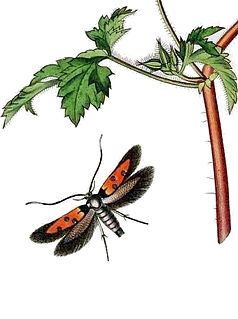
The Agonoxeninae are a subfamily of moths.
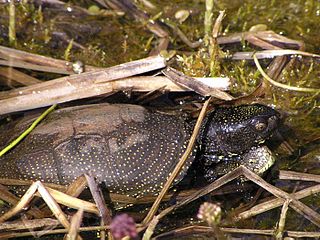
Emys is a small genus of turtles in the family Emydidae. The genus is endemic to Europe and North America.
The South India worm snake is a harmless blind snake species found in southern India. No subspecies are currently recognized.
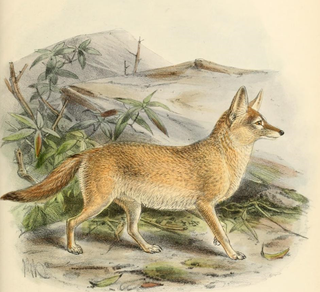
The pale fox is a species of fox found in the band of African Sahel from Senegal in the west to Sudan in the east. It is one of the least studied of all canid species, in part due to its remote habitat and its sandy coat that blends in well with the desert-like terrain.

Iris pallida is a hardy flowering perennial plant of the genus Iris, family Iridaceae. It is native to the Dalmatian coast (Croatia) but widely naturalised elsewhere. It is a member of the subgenus iris, meaning that it is a bearded iris, and grows from a rhizome.

Arctostaphylos pallida, commonly known as Pallid Manzanita, Oakland Hills Manzanita, and Alameda Manzanita, is an upright Manzanita shrub from the Ericaceae, or heath family. It is endemic to the eastern San Francisco Bay Area of Northern California.
Pammeces is a genus of moths in the family Agonoxenidae. It was formerly included in the Cosmopterigidae.
Pammeces lithochroma is a moth of the family Agonoxenidae. It was described by Thomas de Grey, 6th Baron Walsingham, in 1897. It is found in the West Indies.
Pammeces phlogophora is a moth of the Agonoxenidae family. It was described by Walsingham in 1909. It is found in Panama.
Pammeces problema is a moth of the Agonoxenidae family. It was described by Walsingham in 1915. It is found in Colombia.
Pammeces citraula is a moth of the Agonoxenidae family. It was described by Edward Meyrick in 1922. It is found in Peru.
Pammeces crocoxysta is a moth of the Agonoxenidae family. It was first described by Edward Meyrick in 1922. It is found in Brazil.
Pammeces albivittella is a moth of the family Agonoxenidae. It was described by Philipp Christoph Zeller in 1863. It is found in Venezuela.
Labdia pammeces is a moth in the family Cosmopterigidae. It is found in Australia, where it has been recorded from Queensland.
Parametriotinae is a subfamily of moth in the family Elachistidae.
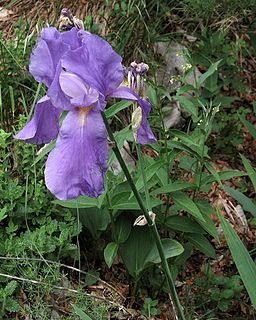
Iris pallidula subsp. cengialti is a subspecies in the genus Iris, it is also in the subgenus of Iris subg. Iris. It is a rhizomatous perennial, from Italy and Slovenia. It has yellowish-green, glaucous, lanceolate or ensiform leaves, tall stem, green flushed with purple spathes, 2 short branches, 2–3 scented flowers, in shades of violet, blue-violet, deep purple, blue-purple, deep blue-purple, pale purple, deep blue, to mid-blue. It has a yellow or orange tipped beard. It was originally published as Iris cengialti but then re-classified as a subspecies of Iris pallida, and known as Iris pallida subsp. cengialti, but it is often still called Iris cengialti. It is cultivated as an ornamental garden plant in temperate regions.

Exaiptasia is a genus of sea anemone in the family Aiptasiidae, native to shallow waters in the temperate western Atlantic Ocean, the Caribbean Sea and the Gulf of Mexico. It is monotypic with a single species, Exaiptasia pallida, and commonly known as the brown anemone, glass anemone or pale anemome,

Dipsastraea pallida is a species of colonial stony coral in the family Merulinidae. It is found in tropical waters of the Indian and Pacific Oceans. This is a common species of coral with a widespread distribution, and the main threat it faces is from the destruction of its coral reef habitats. It is rated as a "least-concern species" by the International Union for Conservation of Nature. This species was first described in 1846 as Favia pallida by the American zoologist James Dwight Dana; it was later transferred to the genus Dipsastraea, but some authorities continue to use the original name.












